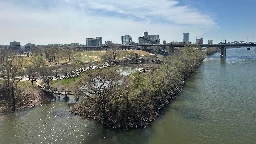Carbon Brief published a great article on this subject: Q&A: What does deep-sea mining mean for climate change and biodiversity loss? Some takeaways on its impacts:
- A 2020 study stated that “scientific misconceptions are likely leading to miscalculations of the environmental impacts of deep-seabed mining”. It added that the disturbance from a single mining operation “could easily be” up to four times larger than its direct mining footprint, affecting up to 32,000 square kilometres over 20 years.
- The potential cost of restoring damage to deep-sea ecosystems could be “astronomical”, according to a report by Planet Tracker, a not-for-profit thinktank.
- A 2022 UN Environment Programme Finance Initiative (UNEPFI) briefing paper saw “no foreseeable way” in which the financing of deep-sea mining could be consistent with a sustainable blue economy. It called on investors to instead “focus efforts” on reducing “the environmental footprint of terrestrial mining” and “support the transition toward a circular economy” to make current mineral demand “obsolete”.
- A 2023 study found that deep-sea mining “is unlikely to resolve the sustainability challenges in the conventional mining sector” and any environmental impacts avoided on land “would be at the expense of economic benefits in mining-reliant” developing countries.
Deep-sea mining can also harm marine organisms that are crucial for climate regulation – those that store carbon in the seabed or produce oxygen in the deep ocean.
- A 2024 study found that polymetallic nodules may be responsible for producing oxygen at the seafloor in the CCZ. The authors said that this oxygen production could be critical for sustaining life at the seafloor.
- A 2025 Nature study provided a rare insight into some of the lasting impacts that mining can cause. It focused on a 1979 mining experiment in the Clarion-Clipperton Zone. During the 1979 test, a mining machine drove grooves into the seafloor. These furrows, which were almost one metre deep and up to three metres wide, looked much the same after 44 years. These impacts are consistent with findings in other surveys of mined test sites.
Seafloor mining vehicles emit toxic plumes of sediments that can impact marine life in the midwaters, from reducing their ability to communicate and causing physiological stress, to forcing species to migrate. Species that could be impacted include sharks, dolphins, whales, squid, fish, shrimp, copepods and jellyfish.
White House weighs executive order to fast-track deep-sea mining
More than 1,900 scientists write ‘SOS’ letter over Trump’s attacks on science
Devastating Multiday Flood Predicted for Mississippi Valley
A third of Americans don't drive. So why is our transportation so car-centric?
We all have different roles to play. I'm here for the fight, but I have a few friends who are fleeing to Europe right now. I can understand both choices.
Thank you for sharing and summarizing! A few more takeaways relating to climate change:
- Emissions growth (0.8%) is lower than GDP growth (3.2%) for 2025, which could be seen as evidence of decoupling. Growth in electricity demand (4.3%) outpaced GDP.
- Renewables made up nearly 40% of new energy production, but coal, oil and natural gas use has continued to increase to record highs.
- Total & per-capita emissions are decreasing in the US & EU, but increasing in China and India.





